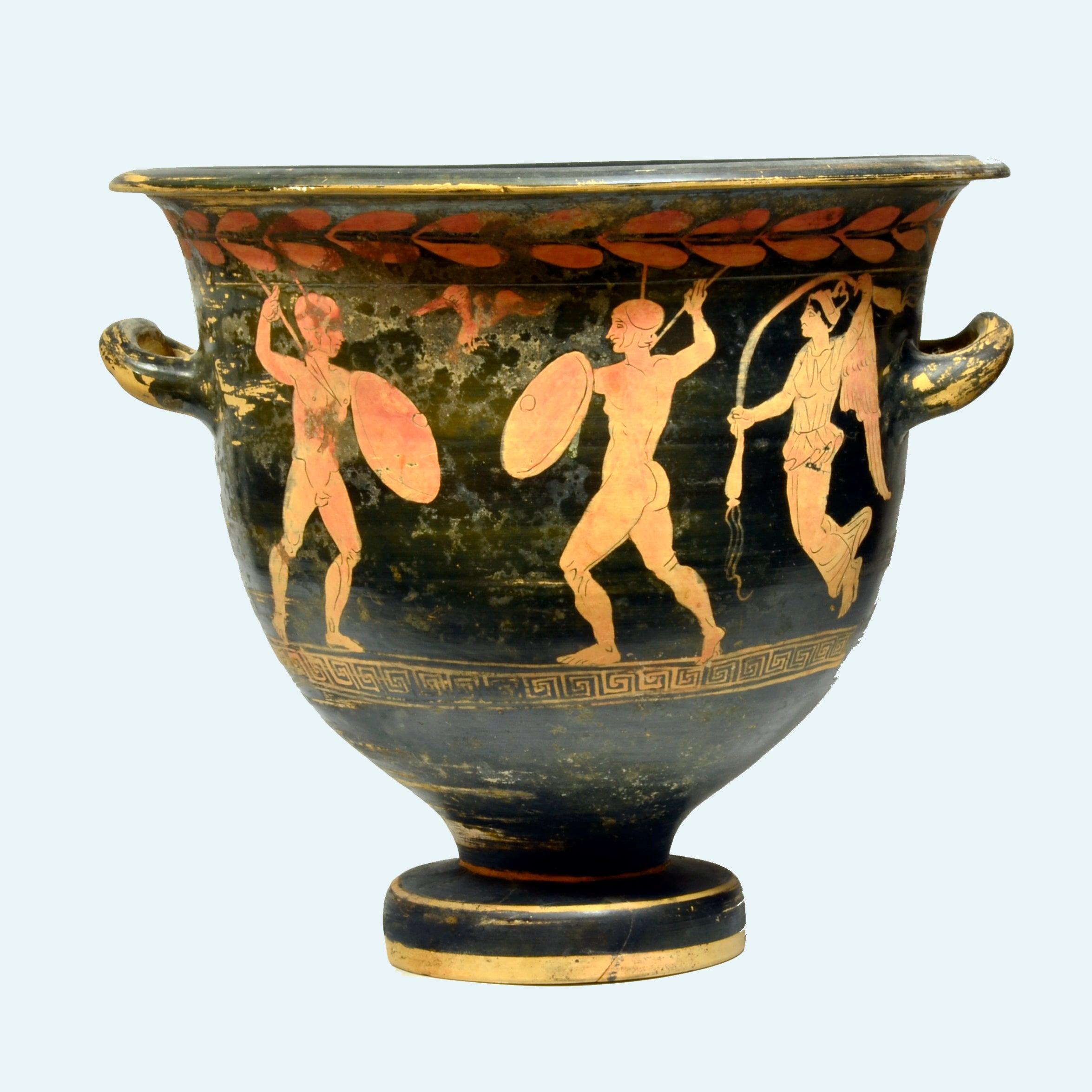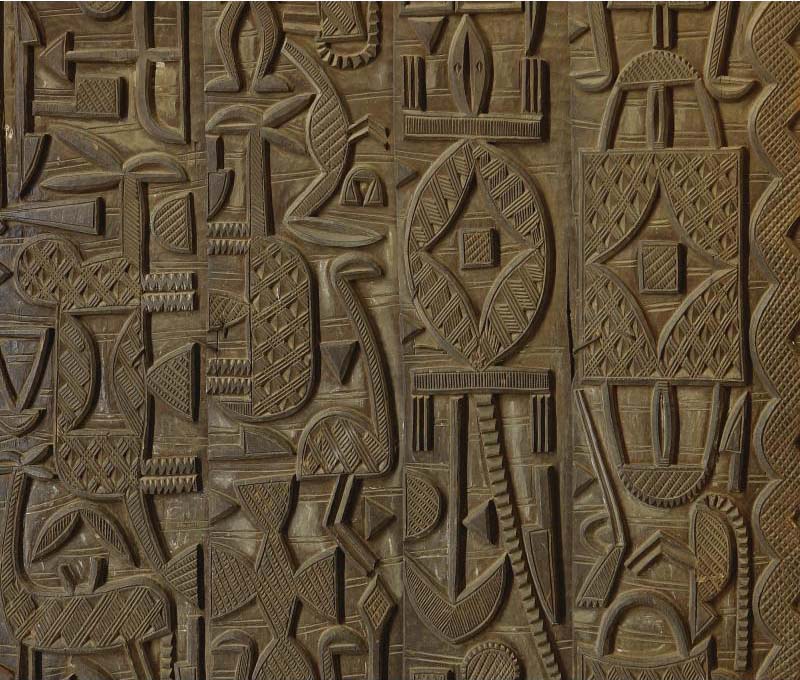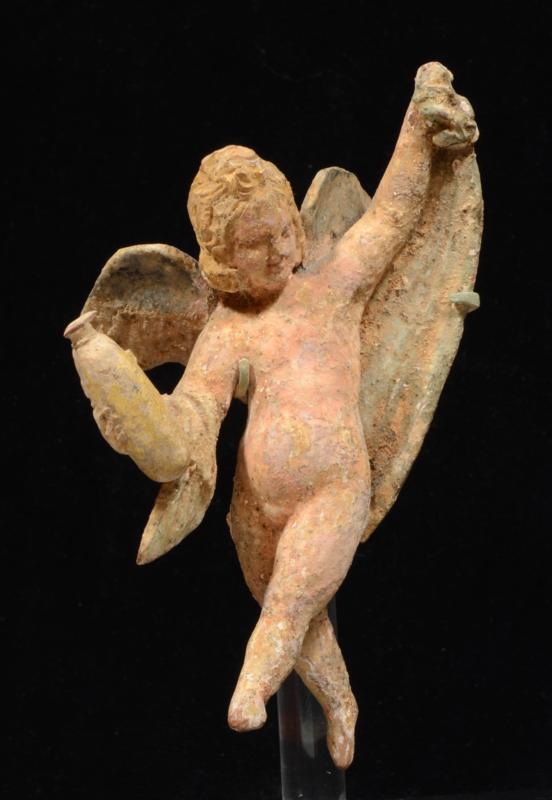The eagle represented courage, strength and immortality, and was a symbol standard –an Aquila–carried by a legionary into battle. Due to its quasi-religious and state importance, to lose an aquila was a grave offense, and the army put much effort into recovering it. In his Natural History, Pliny the Elder praises the eagle’s keen eyesight and harsh parenting technique of forcing its newborns to look into the sun and throwing any child that looked away out of its nest–a tradition that resembled the Romans’ own tollere liberum.
Beyond its military symbolism, the eagle held much religious significance in Ancient Rome, particularly with its connection to Jupiter. As the Republic transitioned into the Empire, emperors, starting with Augustus, began to associate themselves with divinity and were often deified after death. Eagles were often released from the burning pyre of an emperor to symbolize transition from mortal emperor to god.. During the Nerobian and Flavian periods, eagles often decorated altars. From their companionship to Jupiter and representation of divinity and power, eagle motifs and sculptures were found on funerary steles, official and military monuments, and in religious contexts.
This Roman marble eagle is a fantastic and rare example of Roman military influence, royal propaganda and fine art, based on naturalistic, Hellenistic prototypes. The bird stands alert and poised on an integral trapezoidal base. With one naturalistically carved front leg, and another missing, the eagle rests much of its lower body and tail on a Its full chest curves out and is etched in a diamond pattern that decreases in size further down the chest and on the underside, reflecting the eagle’s loftiness and the naturalism prevalent in Roman art. On both sides, right below where the head connects to the chest, the etching gradually rises to create the curve of two wings folded together. On the back of the wings, the feathers are carved to tilt toward the middle and eventually devolve into long lines that converge at the end tip of the folded wings that form an unfinished oval. Just where the eagle’s wings curve at the end, a cylinder deeply etched with sloping vertical lines emerges to form a tail. With a short rounded beak, insect like eyes, and a head covered in etched vertical lines, the eagle is rendered with such naturalism. The eagle’s head is turned to the sky with serious eyes in a head pose akin to Roman statues–like the Prima Porta Augustus–suggesting its regality and divinity.
cylinder deeply etched with sloping vertical lines emerges to form a tail. With a short rounded beak, insect like eyes, and a head covered in etched vertical lines, the eagle is rendered with such naturalism. The eagle’s head is turned to the sky with serious eyes in a head pose akin to Roman statues–like the Prima Porta Augustus–suggesting its regality and divinity.
The 3rd Century in Rome was quite tumultuous. With the assassination of emperor Severus Alexander by his military and a coup, Rome was in turmoil until Diocletian rose to power and implemented reforms, much like his predecessor two hundred years before. A military man and staunch upholder of older Roman traditions and values, Diocletian was often associated with Jupiter and depicted with eagle motifs. Most likely produced between the 3rd and 4th Century AD, this marble eagle might have been commissioned by someone in the court of Diocletian or a wealthy patron wanting an ornament in an image popular at his time. This marble eagle is a wonderful example of the Roman naturalistic sculptural style and an emblem of the religious, militaristic, and state influence on Roman art.
Bibliography:
Kleiner, Diana E.E. Roman Sculpture. New Haven, CT: Yale University Press, 1992.
Padgett, J. Michael, ed. Roman Sculpture: In the Art of the Museum Princeton University. Princeton, NJ: Princeton University Press, 2001.
 cylinder deeply etched with sloping vertical lines emerges to form a tail. With a short rounded beak, insect like eyes, and a head covered in etched vertical lines, the eagle is rendered with such naturalism. The eagle’s head is turned to the sky with serious eyes in a head pose akin to Roman statues–like the Prima Porta Augustus–suggesting its regality and divinity.
cylinder deeply etched with sloping vertical lines emerges to form a tail. With a short rounded beak, insect like eyes, and a head covered in etched vertical lines, the eagle is rendered with such naturalism. The eagle’s head is turned to the sky with serious eyes in a head pose akin to Roman statues–like the Prima Porta Augustus–suggesting its regality and divinity.






